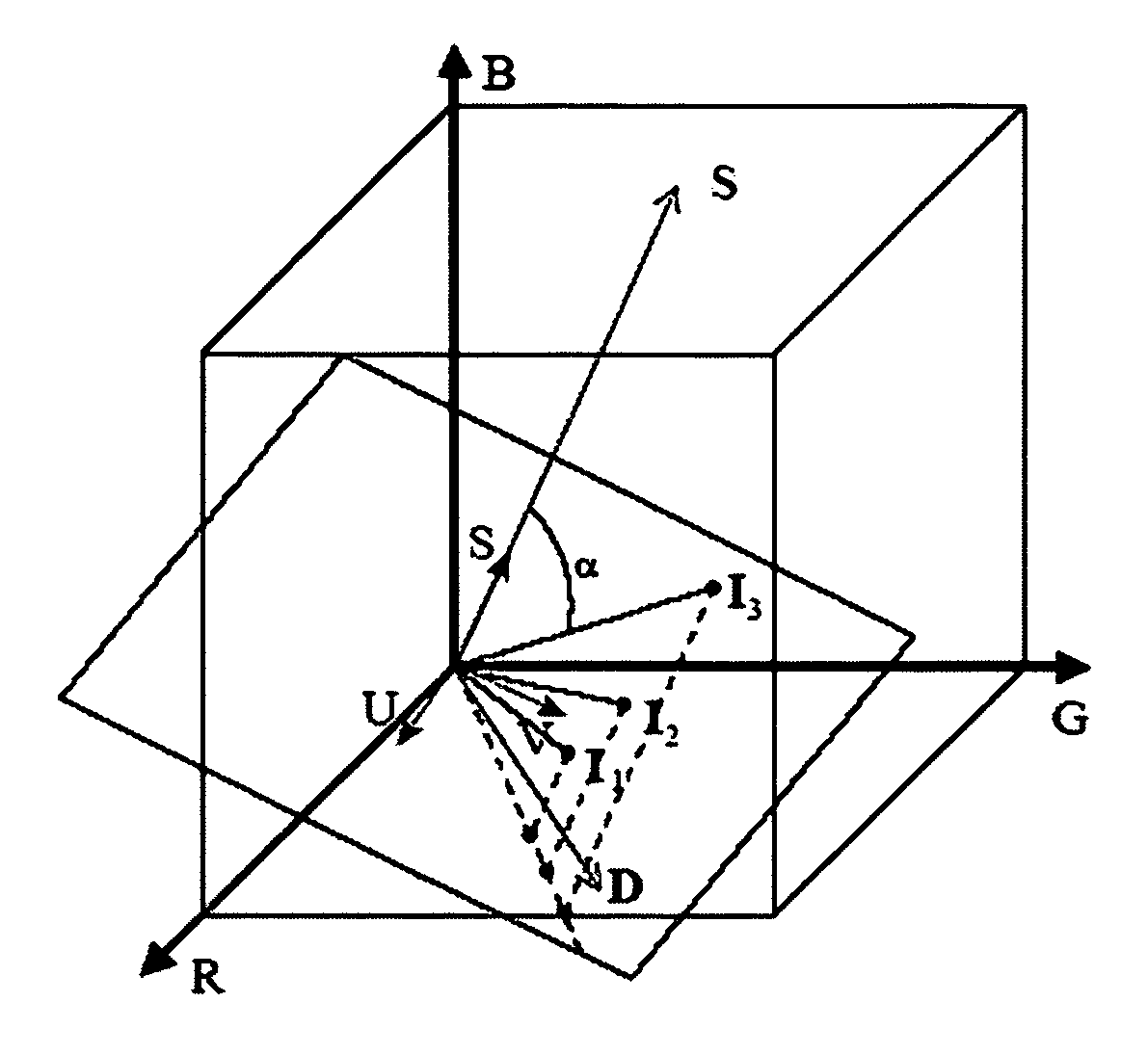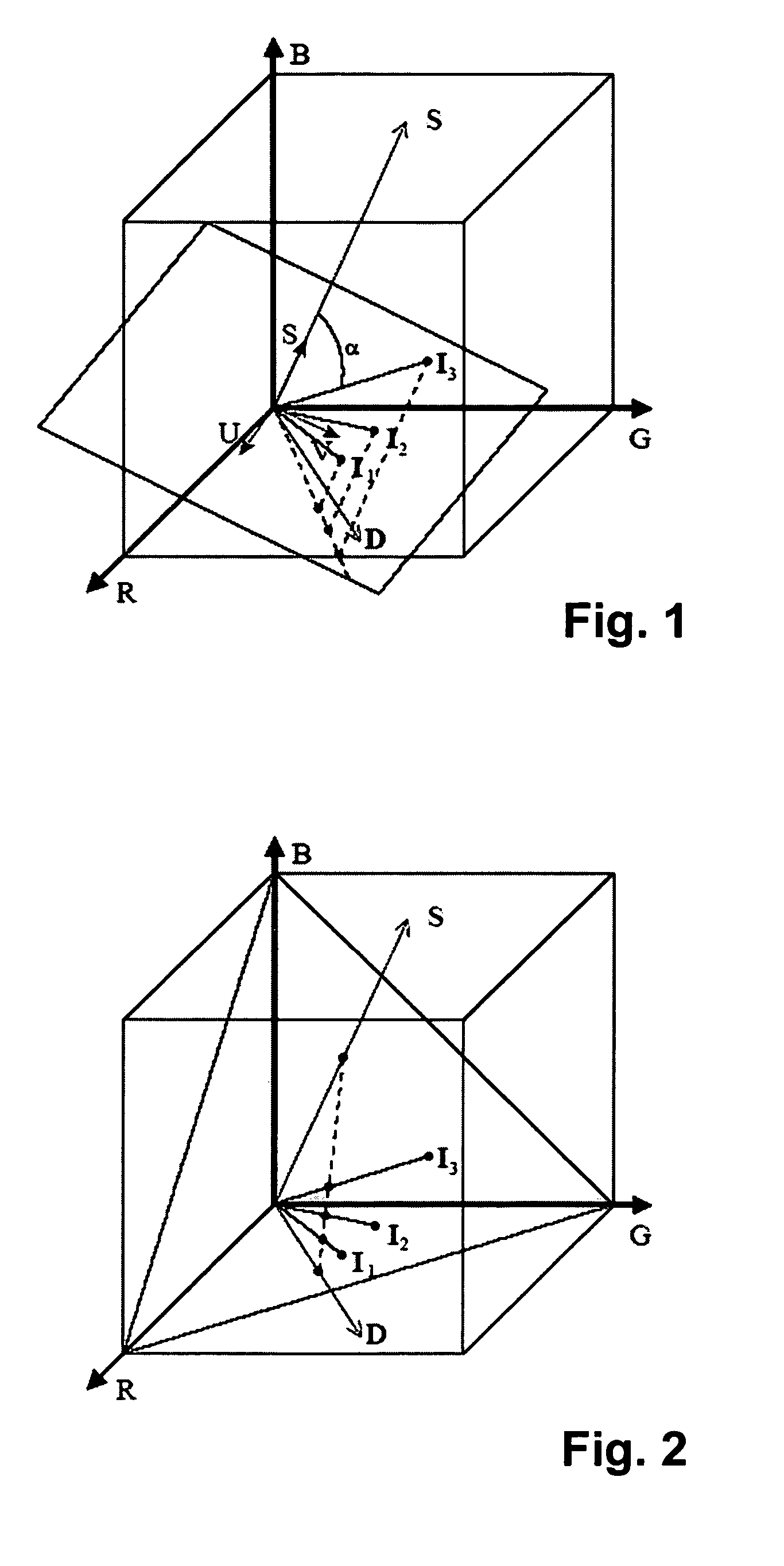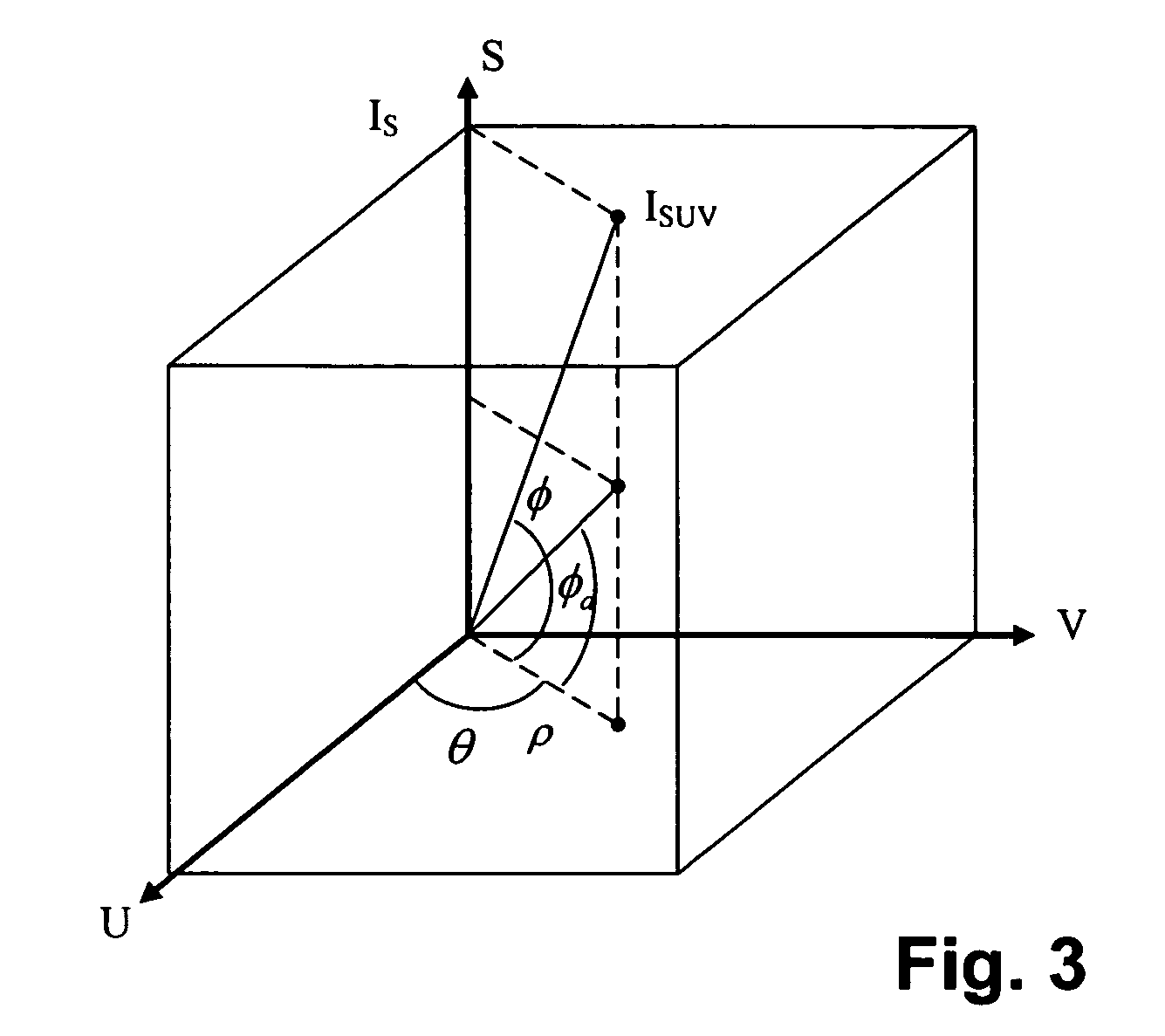Methods for identifying, separating and editing reflection components in multi-channel images and videos
a multi-channel image and video technology, applied in image enhancement, image analysis, color signal processing circuits, etc., can solve the problems of difficult problem in computing specular/diffuse separation, many algorithms in computer vision to produce erroneous results, and many undesirable artifacts in acquired texture maps
- Summary
- Abstract
- Description
- Claims
- Application Information
AI Technical Summary
Benefits of technology
Problems solved by technology
Method used
Image
Examples
Embodiment Construction
[0040]The present invention includes a method for the robust decomposition of images and videos that has many advantages over conventional systems. The decomposition provides a mechanism for partially separating reflection components in images and videos. This decomposition dramatically improves many computer vision algorithms, and the present invention includes algorithms for motion estimation, three-dimensional reconstruction, segmentation, and motion estimation that use this decomposition. Another aspect of the invention is the complete separation of reflection components. This is achieved with partial differential equations that refine or filter the partial separation described above. Finally, the present invention includes a process for dichromatic editing in which the separated reflection components are edited separately before being recombined to produce visual effects.
[0041]In the following description, an input is considered to be any color images and video consisting of M ...
PUM
 Login to View More
Login to View More Abstract
Description
Claims
Application Information
 Login to View More
Login to View More - R&D
- Intellectual Property
- Life Sciences
- Materials
- Tech Scout
- Unparalleled Data Quality
- Higher Quality Content
- 60% Fewer Hallucinations
Browse by: Latest US Patents, China's latest patents, Technical Efficacy Thesaurus, Application Domain, Technology Topic, Popular Technical Reports.
© 2025 PatSnap. All rights reserved.Legal|Privacy policy|Modern Slavery Act Transparency Statement|Sitemap|About US| Contact US: help@patsnap.com



